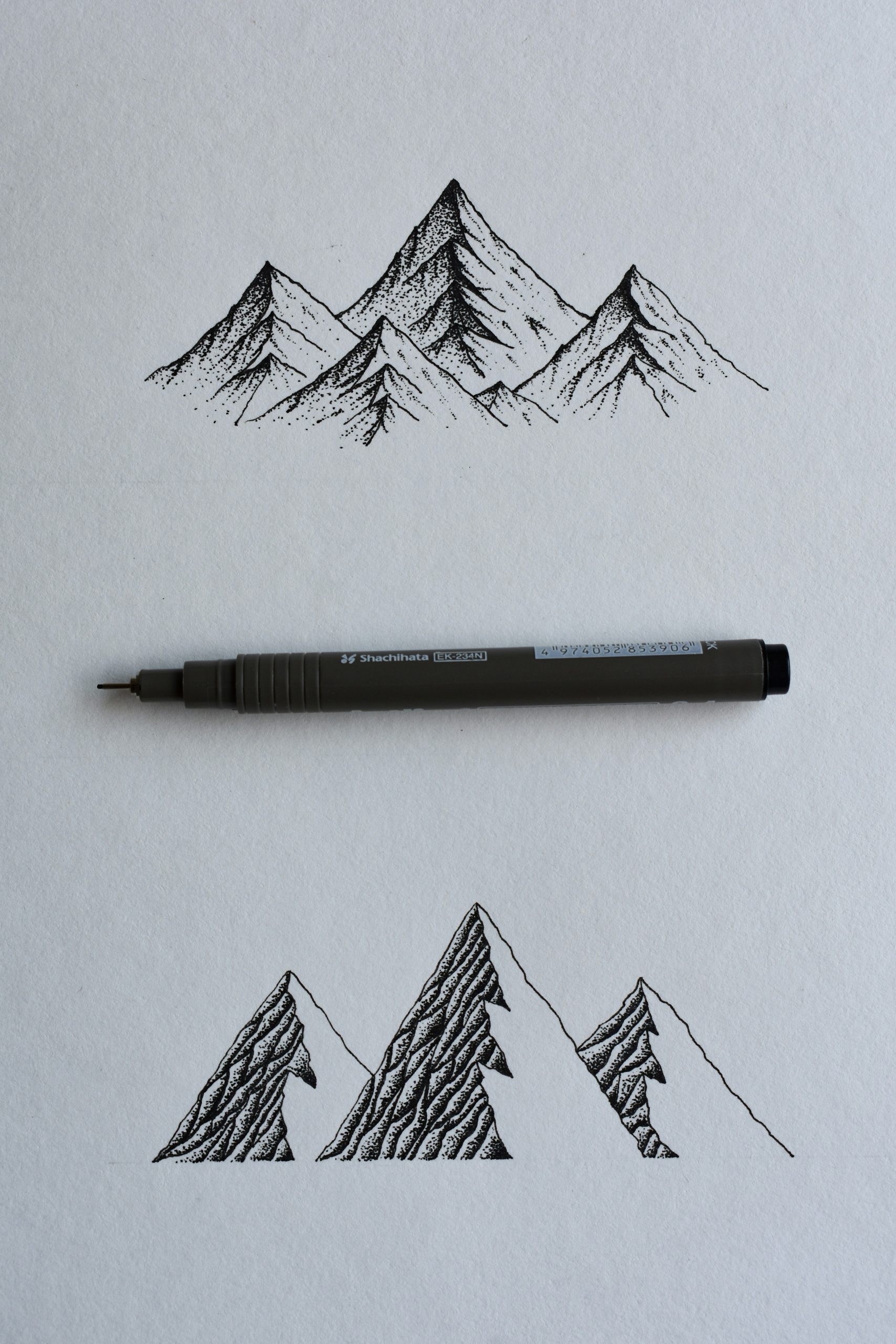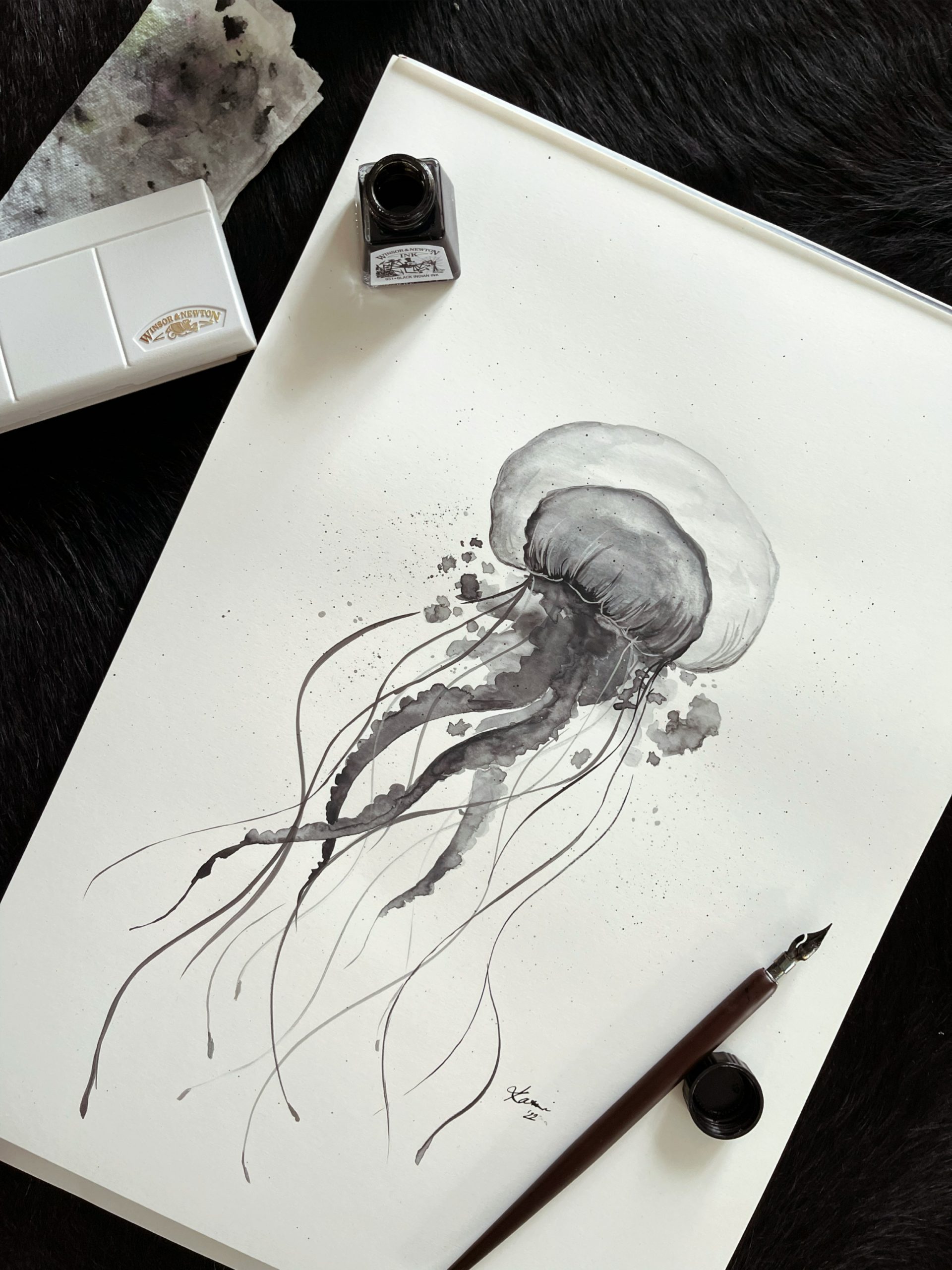
When American comics short-story creator, concept artist, illustrator, and animator created Inktober in 2009 as a self-challenge to improve his own inking skills, he never imagined he would end up creating a worldwide phenomenon. A creative person in every sense of the word, Parker is known for constantly devising challenges like these to push his craft forward (his ‘Create 100 Things’ challenge was featured in The New Creatives podcast, for example), but there was something about the simplicity of Inktober, which requires just a pen, a piece of paper, a prompt, and a creative spark – which captured the imagination of both dabblers and professional artists, so much so, that the challenge was pulling in over a million posts worldwide as early as 2015, four years before the rapid growth of the project finally pushed its creator to apply for a trademark.

In case you missed it…
For the uninitiated, Inktober is an annual art challenge, which takes place every October, and requires the participants to post one piece of ink-based artwork every day, based on a preselected set of prompts provided on the official website. Use of the hashtag #Inktober, along with the year and the prompt, allows one to search and browse through the various submissions on Facebook and Instagram, hence the broad appeal of the challenge. Whether you’re an absolute beginner who likes to doodle, a professional artist who wants to break out of the confines of commercial work to play, or even an aspiring artist trying to show off your creative scope, Inktober is a great way to participate.
Traditionally, the challenge calls for black and white drawings, pen on paper, but as the challenge grew, artists began to incorporate colours, and even branched into digital ‘ink’ illustrations. This of course, raised some eyebrows amongst Inktober purists, but at the end of the day, it is all in a spirit of fun. Hirok Al-Arafat, a banker by profession, who has been participating on and off, says: “Inktober is a way for me to catch up with my creative side (which I believe is there but gets neglected due to other mundane pursuits). As the day to day grind of work life keeps me away from art, and glued to a screen most of the time, the Inktober challenge becomes a nice little way to get away from the spreadsheets and create something real.” He prefers to use both black and coloured pens and paper, and sometimes a ruler.
A prompt response
Part of the fun of Inktober is in response to the prompts set out by Parker and his team. As the creator of a prompt-based challenge myself, I can vouch for the fact that there’s nothing scarier than a blank page, and the spark provided by the prompt is often exactly what the creative needs to venture out into this journey of exploration. “I feel like there’s loads of ways one could interpret them [the prompts]. But that’s the crux of it for me, I think. They’re meant to be interpreted for our own stories” says Auyon Islam, a professional artist and illustrator, known for his work under his label ‘Ace Art Project’. He elaborates: “If there’s a prompt for ‘shell’ for example, I think it’s perfectly valid to just draw a literal shell, but also equally fun to try drawing a memory or something of a moment when you put a shell to your ear and thought you heard the sound of the sea, or even if you decided to design the concept art for a society that uses shells as their primary design principle so all their buildings and structures are shell-like.” When asked how he approaches the prompts, he replies: “For me, the idea is usually to see a prompt and take note of the first thought and then try to entertain a couple of branch thoughts, possibly even a negative space thought that stems from what the story could have been with the absence of the prompt altogether.”
For me, the idea is usually to see a prompt and take note of the first thought and then try to entertain a couple of branch thoughts, possibly even a negative space thought that stems from what the story could have been with the absence of the prompt altogether.”
What was all of it for?
These days, it is impossible to talk about any creative sector without the looming spectre of AI coming into the conversation. As the proliferation of the Ghibli filter showed us, it is all too easy for cynical money-grubbing AI platforms to appropriate decades’ worth of art and reduce it to mindless meme fodder. Faced with this, one has to wonder if it’s even worth putting out original artwork out there anyway. Romanian-British illustrator Ioana Pioaru has some rallying words for despairing artists: ‘It takes AI seconds to generate images…images that take me weeks, or even months to draw by hand. So why do this? Why spend a lifetime on something that can take an instant? Because I love the process. It tests my limits. It shows me what I can achieve with patience, passion and practice. It helps me connect with you and share with you the things I care about without the use of words. Because art is so much more than the outwards appearance of an artwork.”
